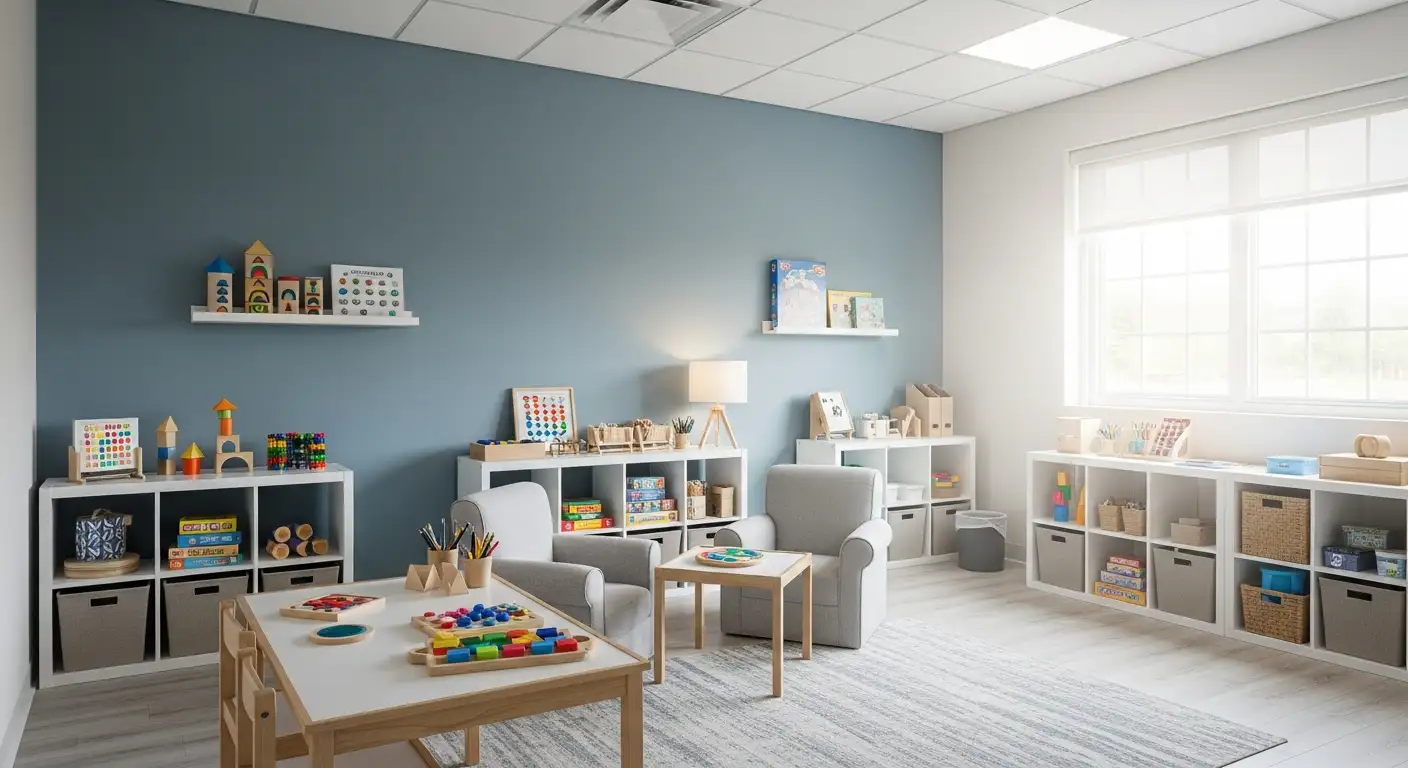Understanding the Foundations of High-Quality ABA Therapy
Selecting the right ABA therapy program for a child with autism is a critical decision that can significantly impact their development and quality of life. High-quality ABA programs are grounded in established behavioral science principles and adhere to rigorous standards of practice. This guide provides an in-depth look at the key features, standards, and evaluation criteria essential for identifying reputable ABA providers.
Core Criteria and Ethical Standards for ABA Programs
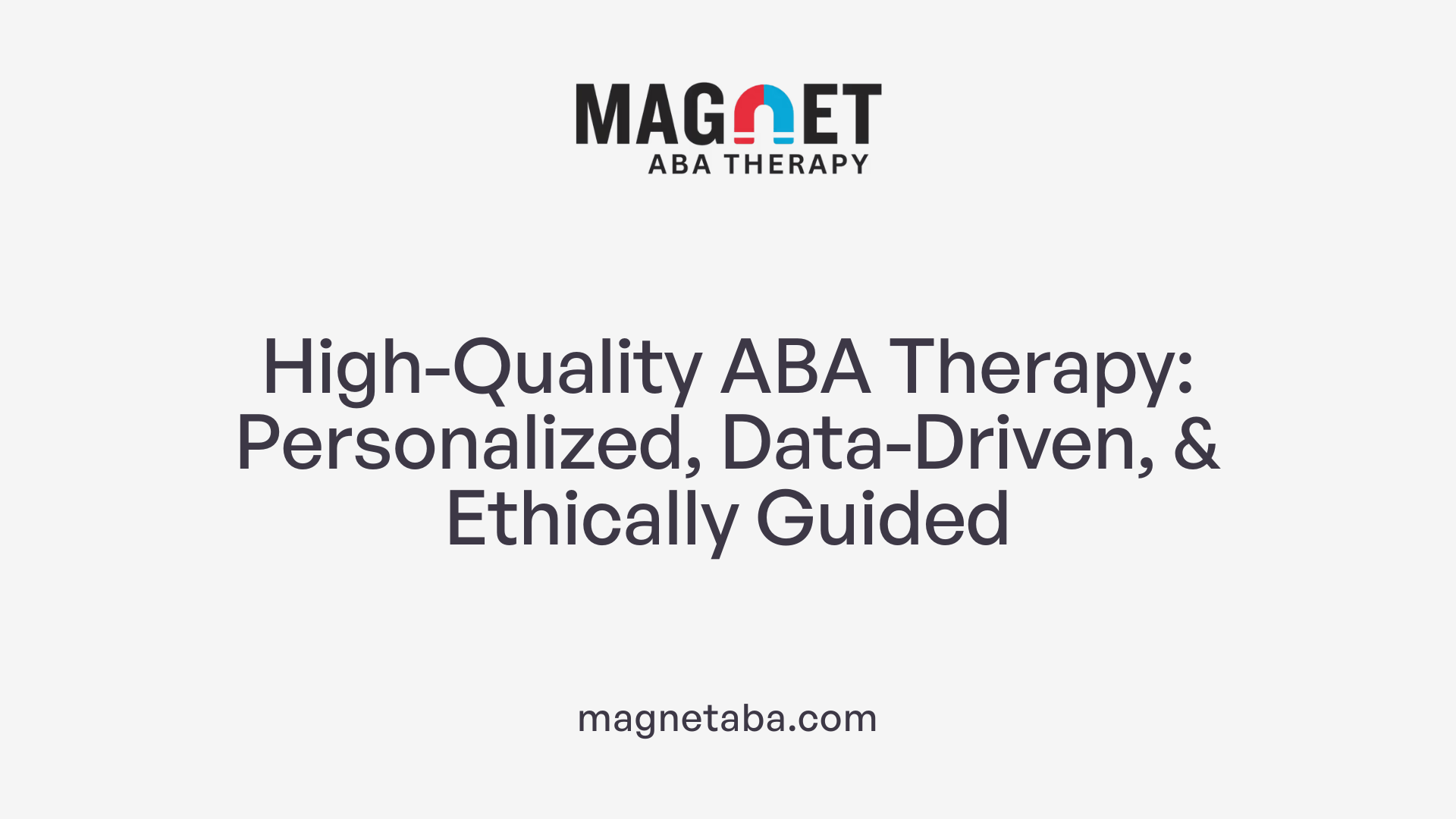
What are the criteria and standards for high-quality ABA therapy programs?
High-quality ABA therapy programs are based on the scientific principles of Applied Behavior Analysis, emphasizing evidence-based interventions that lead to meaningful improvements. These programs are carefully personalized, with treatment plans tailored to each child's unique skills, needs, and preferences, developed through comprehensive assessments. Data collection is central; ongoing monitoring allows practitioners to evaluate progress, determine the effectiveness of interventions, and make necessary adjustments.
Qualified professionals, such as Board Certified Behavior Analysts (BCBAs), oversee the programs, ensuring interventions adhere to ethical and professional standards. BCBAs typically hold a master’s degree in related fields like psychology, speech therapy, or special education, complete specialized ABA coursework, and pass rigorous certification exams. They also supervise less trained practitioners, including Registered Behavior Technicians (RBTs), who assist in implementing strategies under supervision.
Ethics and family involvement are fundamental. Providers seek parental consent and child assent before starting or modifying interventions. Family members are also engaged through training and updates, fostering support and consistency across environments.
External accreditation from organizations like the Behavioral Health Center of Excellence (BHCOE) provides an additional layer of quality assurance. Accreditation involves thorough review processes, including staff observation, interviews, surveys, and adherence to standards that emphasize safety, professionalism, and treatment efficacy.
Most importantly, high-quality ABA values positive reinforcement above punitive methods. Program designs prioritize naturalistic learning, skill generalization across settings, and the reduction of harmful behaviors. The integration of all seven dimensions of quality—such as effectiveness, technology, and behavioral focus—guarantees comprehensive, ethical, and effective intervention.
In summary, excellence in ABA therapy depends on qualified practitioners, scientifically grounded strategies, continuous data-driven evaluation, family engagement, and external quality assurance measures, all aimed at delivering respectful and impactful services.
Staff Qualifications and Supervision
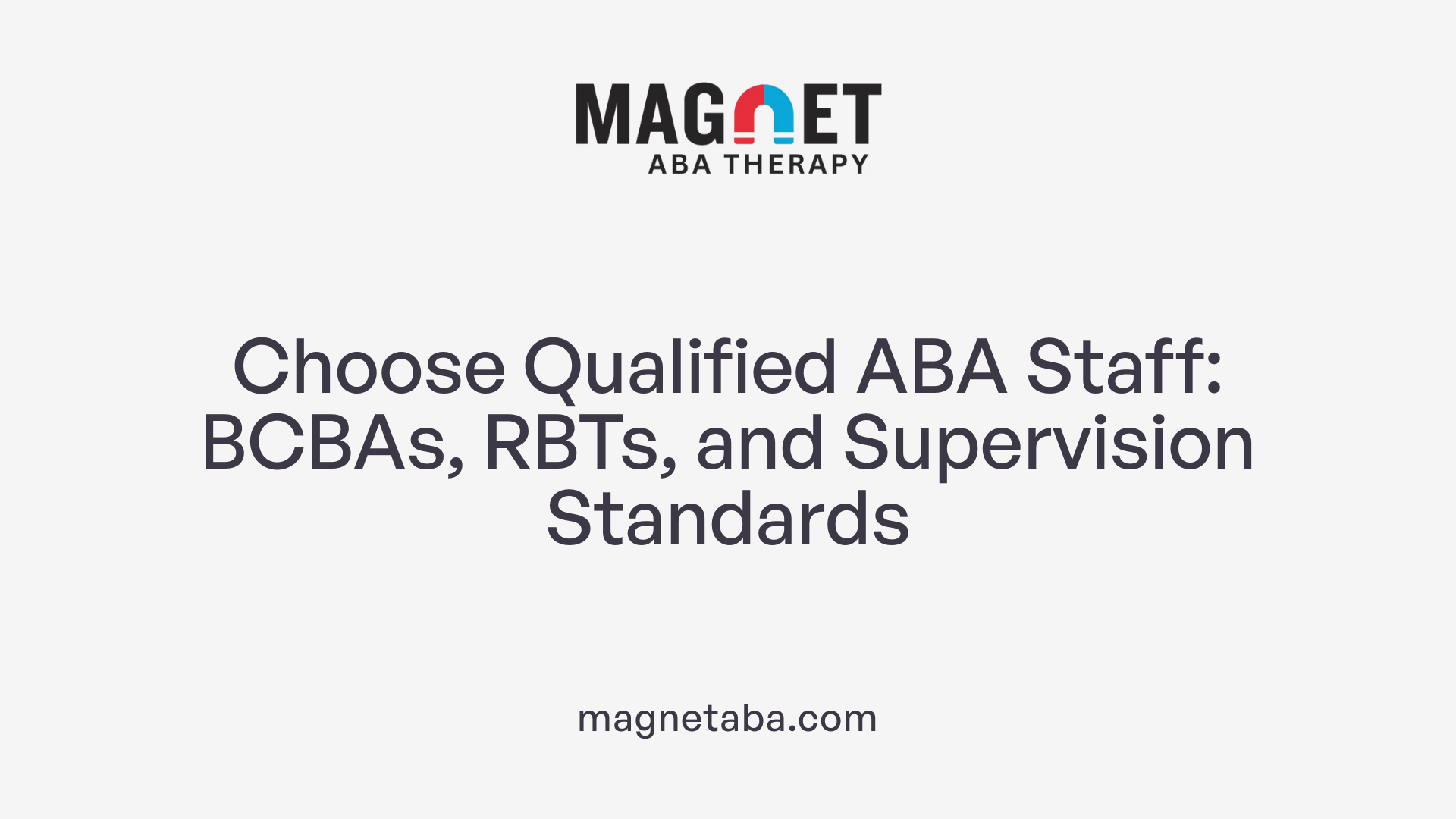
What should I consider when selecting a reputable and effective ABA therapy provider?
When choosing an ABA therapy provider, it’s vital to look closely at the qualifications and oversight of the staff. Certified professionals such as Board Certified Behavior Analysts (BCBAs) are among the most highly credentialed practitioners in the field. BCBAs typically hold master’s or doctoral degrees in related fields like psychology, special education, or speech therapy, and have completed rigorous training including ABA coursework, passing a licensing exam, and accumulating approximately 1,500 hours of supervised fieldwork.
Supporting staff, such as Registered Behavior Technicians (RBTs), work under the supervision of BCBAs. RBTs require specific training and certification, but they are not qualified to develop or modify treatment plans independently. All ABA providers should employ qualified staff who are supervised regularly to ensure that interventions are implemented effectively and ethically.
Supervision structures are crucial for high-quality care. Effective programs involve ongoing oversight by licensed or certified professionals who review data, assess progress, and adapt strategies. Accreditation from independent organizations like the Behavior Health Center of Excellence (BHCOE) verifies that staff qualifications and supervision standards meet industry benchmarks.
Transparency about staff credentials, supervision protocols, and safety measures demonstrates an organization’s commitment to quality. When selecting a provider, inquire about their staff’s qualifications, how supervision is conducted, and whether they adhere to evidence-based practices. Ensuring staff are properly trained and supervised helps maximize positive outcomes and safety during therapy sessions.
| Credential | Requirements | Supervision | Role in ABA Therapy |
|---|---|---|---|
| BCBA | Master’s or doctoral degree, ABA coursework, exam, 1500 hours supervised fieldwork | Leads treatment planning, supervises RBTs | Developing programs, analyzing data |
| BCaBA | Bachelor’s degree, ABA coursework, exam, supervision hours | Supports BCBAs, assists with implementation | Implementing interventions under supervision |
| RBT | Certified through training and exam, supervised regularly | Under BCBA oversight | Direct implementation of therapy sessions |
Prioritizing providers with credentialed, well-supervised staff and clear oversight mechanisms ensures your child receives safe, effective, and personalized ABA services tailored to their needs.
Data and Outcome Measurement
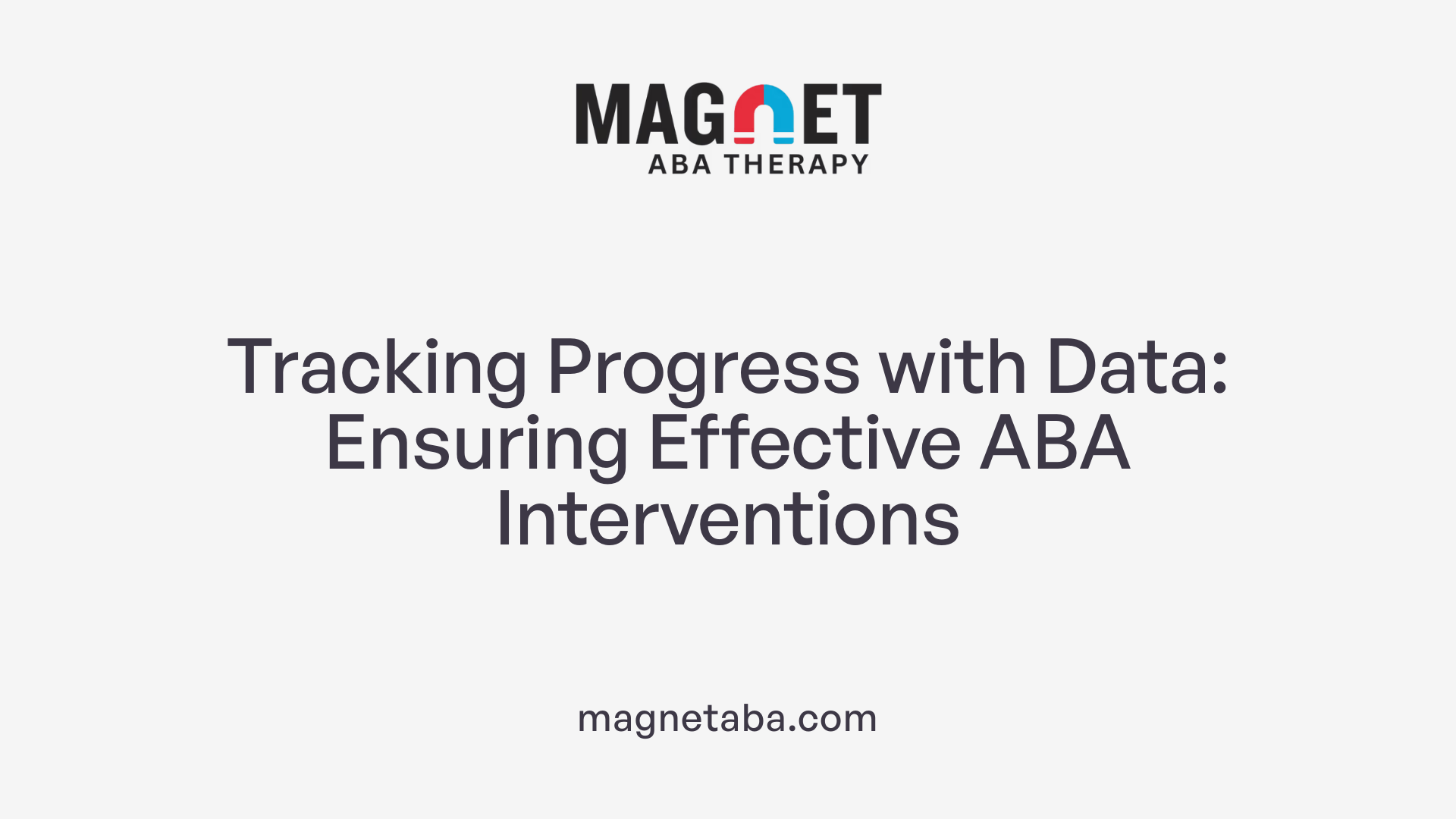
Why is data collection and analysis important in ABA?
A fundamental aspect of high-quality ABA programs is the continuous collection and analysis of data. This scientific approach allows practitioners to objectively track a child's progress, determine the effectiveness of interventions, and make informed adjustments. Data-driven decisions help ensure that interventions are responsive to each child's evolving needs and that goal attainment aligns with desired behavior changes.
What are common progress monitoring techniques?
Programs typically employ various methods such as frequency counts, duration recordings, and ABC data (Antecedent-Behavior-Consequence) tracking. Regular assessments like skill acquisition checklists and behavior charts provide visual insights into improvement over time. Reliability measures, including interobserver agreement, validate the accuracy of collected data.
How is progress evaluated and how is skill generalization ensured?
Progress evaluation involves analyzing trends in collected data to determine if the child is meeting targeted objectives. Effective programs look for behavior changes that are meaningful, socially significant, and transferable across settings and caregivers. Generalization strategies include practicing skills in multiple environments, involving different people, and incorporating real-life scenarios.
How are families kept informed about progress?
Transparency and communication with families are vital. Regular updates on the child's progress, demonstrated through data reports and meetings, keep parents engaged. Families should understand which skills are targeted, observe their child's improvements, and be involved in strategies to support ongoing development. Clear, consistent communication fosters trust and enhances the therapy's effectiveness.
Summary Table of ABA Quality Practices
| Aspect | Description | Additional Details |
|---|---|---|
| Data Collection | Ongoing, objective tracking | Essential for decision-making |
| Progress Monitoring | Regular assessments | Visual charts, checklists |
| Outcome Evaluation | Behavior analysis | Focus on Skill Generalization |
| Family Communication | Regular updates | Parental involvement and training |
| Staff Qualification | BCBAs and credentialed therapists | Supervision and ethical standards |
| Accreditation | External review (e.g., BHCOE) | Ensures high benchmarks |
This systematic approach makes sure that ABA therapy remains effective, aligned with best practices, and centered on the child's growth and well-being.
Safety Protocols and Environment
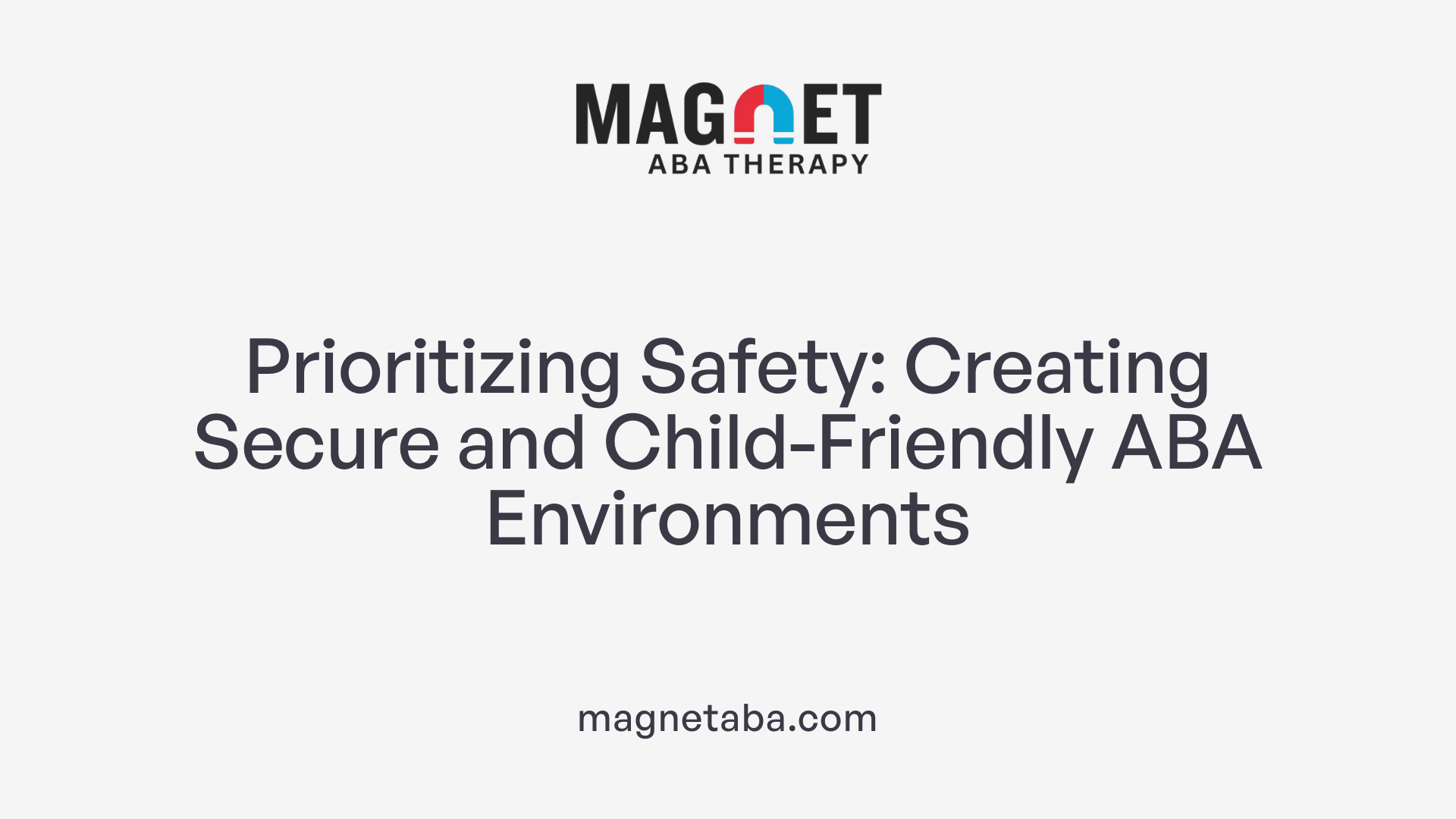
What are the criteria and standards for high-quality ABA therapy programs?
A reputable ABA therapy program prioritizes safety through specific measures that prevent injuries and ensure a secure environment. High-quality programs have clear protocols to avoid accidents, including careful furniture arrangement to prevent falls or collisions, and strategies to prevent children from escaping during sessions.
Staff training is crucial; all providers should be well-versed in safety procedures. Certified professionals like Board Certified Behavior Analysts (BCBAs) and trained technicians, such as Registered Behavior Technicians (RBTs), receive specialized training on safety protocols, including handling emergencies, identifying hazards, and implementing injury prevention techniques.
To maintain a high standard of safety, organizations often seek accreditation from external bodies such as the Behavioral Health Center of Excellence (BHCOE). This accreditation involves rigorous review through observations, interviews, and surveys to confirm that safety and quality standards are met.
The environment must be consistently monitored and adapted to promote safety. This includes utilizing appropriate furniture that minimizes injury risk, securing unsafe objects, and designing therapy spaces that are child-friendly yet secure. These measures ensure that safety is ingrained in daily practices and that the environment supports positive, injury-free learning.
Overall, high-quality ABA organizations integrate safety within their core principles. They develop, implement, and regularly review safety protocols to ensure that every child receives effective, risk-free intervention in a supportive setting.
Individualization and Family Involvement
What are the key features and characteristics of effective ABA providers?
Effective ABA providers prioritize qualifications and experience in their staff, such as employing Board Certified Behavior Analysts (BCBAs) and Registered Behavior Technicians (RBTs) who are licensed or certified and have relevant training. They develop personalized treatment plans based on comprehensive assessments, ensuring that interventions are tailored to each child's unique needs and goals.
A hallmark of quality ABA programs is the use of data to guide decisions. Providers systematically collect and analyze data to monitor progress, adjust strategies, and ensure the intervention's effectiveness. This evidence-based approach supports meaningful skill development and reduces problem behaviors through positive reinforcement and naturalistic teaching.
Clear and open communication with families and educators is vital. Reputable ABA services involve parents from the start—seeking their consent and respecting their child's assent before implementing new strategies. Family training and active participation are integral, enabling parents to reinforce skills across settings beyond therapy sessions.
Furthermore, accredited organizations, such as those certified by the Behavioral Health Center of Excellence (BHCOE), have their staff's quality vetted through observations, interviews, and surveys, emphasizing trust and assurance in their services.
A conducive environment that prioritizes safety, safety protocols, and spaces designed to prevent escapes or injuries enhances the child's learning experience. Overall, effective ABA providers focus on ethical, individualized, and data-driven care, collaborating closely with families and respecting cultural and personal values to achieve the best outcomes.
| Feature | Description | Additional Notes |
|---|---|---|
| Qualified Staff | BCBAs and RBTs with licenses and training | Supervision ensures safe implementation |
| Data-Driven | Regular collection and analysis of progress | Guides treatment modifications |
| Family Involvement | Parental consent, training, and participation | Supports generalization and consistency |
| Safety Protocols | Environment management for safety | Prevents injuries and escapes |
| Individualized Plans | Customized based on assessment | Focused on social and functional skills |
| Accreditation | Certification like BHCOE | Ensures quality standards |
Involving families and providing tailored interventions help ensure that therapy truly benefits the child, promotes skill generalization across settings, and respects family values and cultural considerations.
Conclusion and Final Tips for Parents
When choosing a quality ABA program, trust your intuition and thoroughly evaluate each provider's reputation. Look for accredited organizations, such as those with BHCOE accreditation, which signifies adherence to high standards verified through observation, interviews, and surveys.
Monitoring your child's progress is crucial. An effective ABA program consistently collects and analyzes data on behaviors and skill development, ensuring that interventions lead to meaningful improvements. Stay engaged by asking providers how they measure progress and how often they update families.
Seek out programs committed to continuous improvement and improvement standards. Accreditation from independent third parties adds an extra layer of assurance, indicating that the organization meets nationally recognized quality standards.
Prioritize ethical practices and safety at all times. Ensure the environment is safe, with protocols in place to prevent injuries, escapes, or unsafe objects. The setting should also facilitate positive, reinforcing interactions that promote learning.
Family participation is a vital component of successful ABA therapy. Involve yourself in your child's treatment, seek training if offered, and maintain open communication. A program should be person-centered and tailored to your child's unique needs, guided by comprehensive assessments and individualized goals.
How can I evaluate and compare ABA therapy programs? When evaluating and comparing ABA therapy programs, it's essential to consider the credentials and certifications of staff, such as RBT, ABAT, or BCAT, ensuring they meet established standards. Review the specific instructional methodologies used, including discrete trial training, naturalistic teaching, and fluency-based approaches, and assess how these methods align with the child's individual needs. Observe therapy sessions if possible, and inquire about how progress is tracked through data collection and ongoing assessments. Evaluate the program's staffing expertise, supervision quality, and their ability to incorporate a variety of evidence-based techniques to promote skill development. Lastly, consider the setting—whether community-based, public school, or center-based—and weigh the benefits and limitations of each to determine the best fit for the child's unique needs and goals.
Final Recommendations for Choosing a High-Quality ABA Program
In conclusion, identifying a high-quality ABA therapy program involves careful consideration of staff qualifications, adherence to ethical standards, data-driven practices, and a personalized approach to each child's needs. Accreditation from reputable organizations and transparent communication are vital indicators of quality. Parents should prioritize providers who foster family involvement, safety, and respect for individual differences. By thoroughly evaluating these elements, families can choose a program that not only meets professional standards but also promotes meaningful, long-lasting progress.
References
- 7 Things to Look for in a Quality ABA Provider - BHCOE Accreditation
- How to Know If You're Getting Good ABA - Child Mind Institute
- How do I recognize high quality ABA? - Manhattan Psychology Group
- What to Look for When Choosing an ABA Therapy Program
- 10 Red Flags to Watch Out for in ABA Therapy
- Red Flags to Look Out for in an ABA Therapy Providers
- How to Know If You're Getting Good ABA - Child Mind Institute




